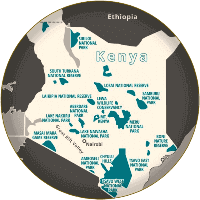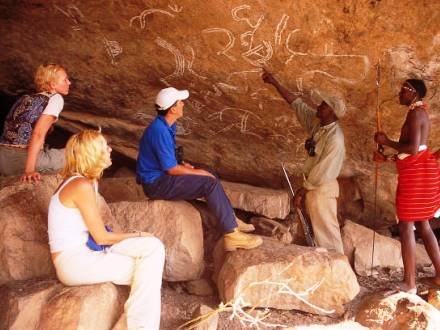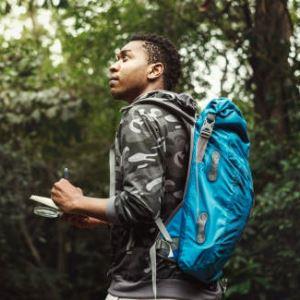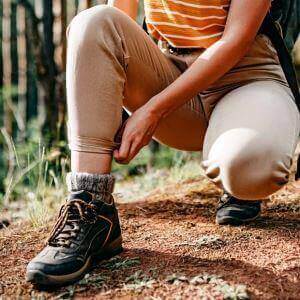 Kenya is a top destination for Norwegian travelers looking to explore a rich tapestry of culture and history. This East African country offers a wide array of immersive experiences, from ancient tribal customs to colonial-era landmarks. Whether you're a cultural enthusiast from Norway or a first-time traveler curious about African heritage, Kenya provides a welcoming, educational, and unforgettable journey. For Norwegian tourists seeking cultural experiences, Kenya offers authentic interactions with indigenous communities. A must-visit is the Bomas of Kenya in Nairobi, where you can witness traditional dances, music, and lifestyles from across the country. The Maasai Mara gives visitors a chance to meet the iconic Maasai people, learn about their customs, and even stay in eco-friendly lodges that support local tribes. Farther north, the Turkana region offers a fascinating look into one of the oldest and most resilient communities in Kenya, ideal for travelers interested in deep-rooted heritage. Kenya's historical landmarks also attract many visitors from Norway each year. Fort Jesus in Mombasa, built in the 16th century, provides insight into Kenya's colonial past and maritime trade history. The fort is a UNESCO World Heritage Site and a popular attraction for history enthusiasts. Another highlight is the Karen Blixen Museum in Nairobi, the former home of the Danish author best known for "Out of Africa." With her Scandinavian roots, this museum holds special meaning for Norwegian tourists. Lamu Old Town, also recognized by UNESCO, reveals a different side of history with its well-preserved Swahili architecture and centuries-old Islamic traditions. To enrich their travel experience, Norwegian travelers can time their visits with some of Kenya's vibrant cultural festivals. The Lake Turkana Festival is a spectacular celebration of ethnic diversity, featuring traditional dances, music, and local cuisine from more than a dozen indigenous communities. The Lamu Cultural Festival is another exciting event, offering dhow sailing competitions, Swahili poetry, and authentic street food. These festivals are ideal opportunities for Norwegians to experience the energy and beauty of Kenya’s cultural landscape. Whether your interest lies in tribal traditions, colonial history, or cultural celebrations, Kenya offers Norwegian tourists a well-rounded and deeply enriching travel experience. With friendly locals, knowledgeable guides, and a safe environment for exploration, Kenya continues to be a cultural gem for visitors from Norway. For travelers from Norway who value meaningful travel, Kenya delivers on all fronts. Beyond the iconic safaris and scenic landscapes, the country presents a cultural depth that resonates with travelers looking to connect with people and stories. Kenyan hospitality is warm and welcoming, making Norwegians feel at home while discovering a different way of life. Guided village tours, cultural workshops, and storytelling sessions provide immersive learning that’s both respectful and rewarding. Travel logistics in Kenya are increasingly traveler-friendly. Nairobi and Mombasa offer international-standard accommodations, while domestic travel is easy with multiple flights, well-connected roadways, and reputable tour operators. Language barriers are minimal, as English and Swahili are widely spoken. Safety is a priority in most cultural sites and festivals, and many regions now offer customized travel packages designed specifically for European tourists, including those from Norway. Whether for a short cultural getaway or a long historical tour, Kenya makes a compelling case for an enriching travel experience.
Kenya is a top destination for Norwegian travelers looking to explore a rich tapestry of culture and history. This East African country offers a wide array of immersive experiences, from ancient tribal customs to colonial-era landmarks. Whether you're a cultural enthusiast from Norway or a first-time traveler curious about African heritage, Kenya provides a welcoming, educational, and unforgettable journey. For Norwegian tourists seeking cultural experiences, Kenya offers authentic interactions with indigenous communities. A must-visit is the Bomas of Kenya in Nairobi, where you can witness traditional dances, music, and lifestyles from across the country. The Maasai Mara gives visitors a chance to meet the iconic Maasai people, learn about their customs, and even stay in eco-friendly lodges that support local tribes. Farther north, the Turkana region offers a fascinating look into one of the oldest and most resilient communities in Kenya, ideal for travelers interested in deep-rooted heritage. Kenya's historical landmarks also attract many visitors from Norway each year. Fort Jesus in Mombasa, built in the 16th century, provides insight into Kenya's colonial past and maritime trade history. The fort is a UNESCO World Heritage Site and a popular attraction for history enthusiasts. Another highlight is the Karen Blixen Museum in Nairobi, the former home of the Danish author best known for "Out of Africa." With her Scandinavian roots, this museum holds special meaning for Norwegian tourists. Lamu Old Town, also recognized by UNESCO, reveals a different side of history with its well-preserved Swahili architecture and centuries-old Islamic traditions. To enrich their travel experience, Norwegian travelers can time their visits with some of Kenya's vibrant cultural festivals. The Lake Turkana Festival is a spectacular celebration of ethnic diversity, featuring traditional dances, music, and local cuisine from more than a dozen indigenous communities. The Lamu Cultural Festival is another exciting event, offering dhow sailing competitions, Swahili poetry, and authentic street food. These festivals are ideal opportunities for Norwegians to experience the energy and beauty of Kenya’s cultural landscape. Whether your interest lies in tribal traditions, colonial history, or cultural celebrations, Kenya offers Norwegian tourists a well-rounded and deeply enriching travel experience. With friendly locals, knowledgeable guides, and a safe environment for exploration, Kenya continues to be a cultural gem for visitors from Norway. For travelers from Norway who value meaningful travel, Kenya delivers on all fronts. Beyond the iconic safaris and scenic landscapes, the country presents a cultural depth that resonates with travelers looking to connect with people and stories. Kenyan hospitality is warm and welcoming, making Norwegians feel at home while discovering a different way of life. Guided village tours, cultural workshops, and storytelling sessions provide immersive learning that’s both respectful and rewarding. Travel logistics in Kenya are increasingly traveler-friendly. Nairobi and Mombasa offer international-standard accommodations, while domestic travel is easy with multiple flights, well-connected roadways, and reputable tour operators. Language barriers are minimal, as English and Swahili are widely spoken. Safety is a priority in most cultural sites and festivals, and many regions now offer customized travel packages designed specifically for European tourists, including those from Norway. Whether for a short cultural getaway or a long historical tour, Kenya makes a compelling case for an enriching travel experience.
Best Heritage Sites and Events in Kenya for Norwegian Tourists
| Attraction/Event | Location | Cultural Significance | Ideal For |
|---|---|---|---|
| Bomas of Kenya | Nairobi | Traditional music, dance, and crafts | All age groups |
| Maasai Mara Villages | Narok County | Interactions with the Maasai tribe | Cultural explorers |
| Fort Jesus | Mombasa | Colonial fort with museum | History buffs |
| Karen Blixen Museum | Nairobi | Danish author's home, Out of Africa fame | Scandinavian fans |
| Lamu Old Town | Lamu Island | Swahili architecture and heritage | Culture lovers |
| Lake Turkana Festival | Turkana County | Ethnic celebration with performances | Festival goers |
| Lamu Cultural Festival | Lamu Island | Dhow races, Swahili poetry, local food | Immersive tourists |
Best Cultural Heritage Sites in Kenya for Tourists from Norway
Kenya is rich in cultural heritage, offering Norwegian tourists a window into traditional African life, ancient customs, and community stories passed down through generations. For travelers interested in authentic and immersive experiences, Kenya presents numerous destinations that vividly express its unique identity and deep-rooted traditions. This makes heritage tours in Kenya for Norwegian travelers both meaningful and educational. One of the most popular spots is the Bomas of Kenya, located in the capital, Nairobi. This cultural center showcases traditional music, dance, homesteads, and crafts representing more than 40 ethnic groups in Kenya. It's a family-friendly attraction where Norwegian visitors can enjoy live performances and guided tours that make the experience engaging and interactive. In Narok County, near the famed Maasai Mara National Reserve, tourists have the opportunity to meet the Maasai people, one of Kenya's most iconic communities. These cultural encounters include learning about Maasai customs, participating in traditional dances, and gaining insight into their semi-nomadic lifestyle. Many eco-lodges also offer cultural visits that directly support local communities. The Turkana region, situated in northwestern Kenya, provides a more off-the-beaten-path experience. It offers rare access to some of Kenya’s most resilient communities, including the Turkana people. Visitors can explore traditional fishing practices, attend village ceremonies, and hear oral histories shared by elders. It's an ideal region for travelers seeking deeper cultural connection. Other areas worth exploring include Kisumu on Lake Victoria, where the Luo culture thrives, and the coastal towns of Kilifi and Malindi, rich in Swahili history and traditions. These regions offer music, dance, storytelling, and cuisine that are distinctly different from central and northern Kenya, providing a well-rounded view of the country's diversity. Safety and convenience are key advantages for Norwegian tourists exploring these cultural sites. Most heritage attractions are accessible by road or domestic flights, and many offer professional guides to ensure educational and respectful interactions. English is widely spoken, and many tours are designed with European visitors in mind, including clear itineraries and culturally sensitive practices. Norwegian travelers interested in cultural experiences should consider incorporating visits to these heritage-rich sites as part of their broader Kenyan adventure. The combination of accessible locations, rich traditions, and welcoming communities ensures a journey that is both enlightening and unforgettable. Kenya’s cultural heritage sites provide an enriching journey for Norwegian tourists. With safe environments, engaging traditions, and warm hospitality, these destinations create opportunities for meaningful travel that connects people across continents and cultures. Whether you're walking through a traditional village, attending a vibrant festival, or exploring a historical site, each experience offers a unique glimpse into Kenya’s diverse cultural fabric. The welcoming nature of local communities ensures that Norwegian visitors feel comfortable and engaged, making it easy to learn and participate respectfully. These interactions not only broaden cultural understanding but also create lasting memories rooted in human connection. Moreover, with growing efforts toward sustainable tourism, many of these heritage sites offer eco-conscious travel options that benefit both the traveler and the host community. Kenya’s cultural destinations serve as a bridge between past and present, Africa and Europe making them a must for any Norwegian seeking a travel experience rich in history, meaning, and connection.
Where Can Norwegians Explore Authentic Kenyan Culture Safely?
Kenya is a destination full of cultural depth, ideal for Norwegian tourists seeking authentic and safe experiences. Whether you're walking through a traditional village, joining a festival, or visiting a cultural center, there are many secure ways to immerse yourself in Kenya's diverse traditions. These encounters not only enrich your travel but also provide meaningful interactions with local communities.
- Bomas of Kenya in Nairobi: This well-known cultural center provides an immersive yet secure environment for learning about Kenya’s ethnic diversity. Norwegian tourists can enjoy staged performances of traditional music and dance from over 40 ethnic groups. Visitors can also walk through reconstructed traditional homesteads and engage with local artisans showcasing crafts and daily practices. Guides are available to explain the significance of each presentation, making the experience both educational and respectful. Its central location in Nairobi and managed programming make it an ideal starting point for those new to Kenyan culture.
- Maasai Mara Cultural Visits: Within the Maasai Mara ecosystem, Norwegian travelers can join guided village tours arranged by certified eco-lodges. These experiences provide an in-depth look into the Maasai way of life, including their attire, social structures, and rituals. Participation in dances and storytelling sessions is common, and visitors often have opportunities to purchase handmade jewelry or crafts directly from the artisans. Safety is well managed through local partnerships, ensuring that both tourists and community members benefit from the interactions.
- Turkana Region Experiences: The Turkana region offers adventurous travelers from Norway the chance to explore one of Kenya’s most resilient and traditional communities. While more remote, guided visits ensure that safety and logistics are fully accounted for. Tourists can attend vibrant ceremonies, watch traditional fishing techniques along Lake Turkana, and listen to oral histories from elders. These experiences promote cultural preservation while offering genuine, respectful interactions. Due to its off-the-beaten-path nature, it’s especially suited for culturally curious travelers looking for a deep, meaningful experience.
- Swahili Coast Adventures: Towns like Lamu and Malindi offer a coastal take on Kenyan culture, rooted in centuries of Arab, Persian, and African influences. Norwegian tourists can explore narrow winding streets filled with Swahili architecture, visit ancient mosques, and dine on flavorful coastal cuisine. Local guides help interpret the rich history of the area, and dhow sailing trips offer a scenic way to appreciate the cultural landscape. The coast is generally safe, tourist-friendly, and offers unique insight into a different side of Kenya’s cultural identity.
Each of these offers historical travel experiences in Kenya for Norwegian tourists that are both secure and unforgettable. Whether it’s witnessing a traditional Maasai ceremony, wandering through the centuries-old streets of Lamu, or exploring the dynamic performances at Bomas of Kenya, each destination provides a compelling glimpse into the soul of the country. Norwegian tourists can immerse themselves in daily life, build connections with local communities, and gain valuable insights into Kenya’s rich past and vibrant present. These thoughtfully curated experiences ensure both cultural appreciation and traveler safety, making every moment deeply memorable and transformative.
Top Historical Landmarks in Kenya for Visitors from Norway
Kenya offers a wealth of historical landmarks that capture the country’s layered past, making it a fascinating destination for Norwegian tourists. From the coastal forts of Mombasa to the literary legacy of Karen Blixen and the architectural treasures of Lamu, Kenya’s historical sites bring stories of ancient trade, colonial influence, and cultural evolution to life. These places not only hold national importance but also connect deeply with global narratives, including those familiar to travelers from Norway. One of the most iconic historical sites in Kenya is Fort Jesus, located in the coastal city of Mombasa. Built by the Portuguese in the late 16th century, this massive fort tells the story of colonial conquest and defense along the Indian Ocean trade route. Its museum now holds artifacts, weaponry, and archaeological finds that shed light on the blending of African, Arab, and European cultures. Norwegian tourists can explore the ramparts, enjoy views of the harbor, and take guided tours to understand the fort’s historical significance. In Nairobi, the Karen Blixen Museum offers a more personal look at Kenya’s colonial past. The museum is the former home of the Danish author of "Out of Africa," a literary classic that has resonated with Scandinavian readers for decades. Visitors can walk through the preserved house, view her furnishings and photographs, and learn about her life and contributions to Kenya during the early 20th century. The site is especially meaningful for Norwegian tourists due to its Scandinavian ties. Another gem is Lamu Old Town on the northeastern coast of Kenya. As a UNESCO World Heritage Site, it offers a unique look into Swahili culture that has thrived for centuries. Narrow streets, intricately carved wooden doors, and bustling markets make Lamu feel like a step back in time. Norwegian visitors can tour historic mosques, visit local museums, and experience the blend of African, Arab, and Indian influences that shape this ancient town. The town’s peaceful charm and cultural richness make it a must-visit. Other notable sites include the ruins of Gedi near Malindi, a medieval Swahili-Arab coastal settlement surrounded by dense forest, and the Railway Museum in Nairobi, which showcases Kenya’s industrial and transport history. Whether it’s ancient civilizations or colonial-era artifacts, there are numerous historical sites in Kenya for Norwegian tourists to discover and appreciate. By visiting these landmarks, travelers from Norway gain not only historical knowledge but also a deeper understanding of Kenya’s cultural journey through time. Each location provides a distinctive view into different historical eras, from Swahili civilization to colonialism and the rise of independent Kenya. This diversity allows tourists to explore the nation's evolution while drawing connections to their own heritage. The interactive nature of these sites such as walking tours, museums, guided storytelling, and preserved architecture invites meaningful engagement with local history and culture. For Norwegian tourists, who often value thoughtful, immersive travel, these experiences offer more than just sightseeing they offer reflection and education. Furthermore, engaging with Kenya’s historical landscape supports local communities and heritage conservation efforts. Visitors contribute to sustaining these important cultural assets, ensuring they remain intact for future generations. Whether gazing across the Indian Ocean from Fort Jesus or walking through the narrow alleys of Lamu Old Town, each moment spent in Kenya’s historical landmarks is one of discovery, connection, and cultural appreciation. These experiences leave lasting impressions, enhancing not only knowledge but also a profound respect for the complexity and richness of Kenya’s past and its vibrant present.
What Are the Top Historical Attractions in Kenya for Norwegians?
Kenya is home to numerous historical and cultural attractions that fascinate travelers from around the world, including families from Norway. For those seeking an enriching blend of education, heritage, and adventure, Kenya delivers unforgettable experiences. Whether you're exploring ancient ruins, colonial architecture, or heritage museums, there's something to captivate every age group. These destinations are ideal for family-oriented itineraries designed with safety, engagement, and learning in mind. This is why Kenya cultural vacation packages for Norwegian families are increasingly popular among those looking to combine leisure with cultural depth.
- Fort Jesus, Mombasa: This UNESCO-listed fort was constructed by the Portuguese in 1593 to protect the coast and trading routes. Norwegian families can explore its thick stone walls, cannons, and underground tunnels, all while learning about centuries of colonial and Swahili history. Guided tours bring the story to life, offering an engaging way for children and adults alike to understand the region's strategic significance and architectural resilience.
- Karen Blixen Museum, Nairobi: Once home to the famous Danish author of "Out of Africa," this museum offers a serene and nostalgic experience. Norwegian families can walk through the well-preserved colonial-era house, explore the gardens, and learn about Blixen’s literary legacy and life in Kenya. The connection to Scandinavia makes this stop especially meaningful for visitors from Norway.
- Lamu Old Town, Lamu Island: Stepping into Lamu feels like traveling back in time. As Kenya's oldest continually inhabited town, its maze-like alleys, coral stone houses, and carved wooden doors reflect a rich Swahili-Arab history. Families can enjoy donkey rides through the narrow streets, visit museums, and learn about ancient trade routes, all while soaking in the charm of island life.
- Gedi Ruins, near Malindi: These medieval ruins are hidden in a forest and surrounded by mystery. Dating back to the 13th century, the town was once a thriving Swahili settlement. Children will enjoy exploring the winding stone paths, moss-covered walls, and secret wells, while parents learn about the town's abrupt disappearance and rediscovery through archaeological efforts.
- Nairobi Railway Museum: For families fascinated by trains and infrastructure, this museum offers a hands-on history of Kenya’s rail system. Vintage locomotives, artifacts, and informative exhibits trace the development of transport from colonial times to modern Kenya. It's both educational and entertaining for visitors of all ages.
These attractions offer a balance of learning and fun, creating memorable experiences for Norwegian families seeking historical depth during their Kenyan adventure. Whether visiting a 16th-century fort or walking through a museum that ties into Scandinavian history, each site offers an opportunity to learn, bond, and discover something new as a family. The interactive nature of many attractions ensures that children remain engaged, while adults can appreciate the cultural and historical context. With safety, accessibility, and multilingual guides available, these sites cater to diverse family needs and travel styles. For Norwegian families interested in travel with meaning, Kenya is a top choice.
Unique Cultural Events in Kenya Ideal for Norwegian Tourists
 Kenya’s cultural calendar offers a vibrant selection of festivals and traditional gatherings that provide unforgettable experiences for Norwegian tourists. From colorful tribal celebrations to historic reenactments and coastal heritage events, these occasions immerse travelers in the rhythm of local life. They offer rare opportunities to observe authentic traditions passed down through generations and to interact meaningfully with diverse communities across the country. For Norwegian travelers looking for more than sightseeing, attending these cultural events is a rewarding way to explore Kenya’s identity. One of the most significant events is the Lake Turkana Festival. Held annually in the northern town of Loiyangalani, this event brings together over a dozen ethnic communities including the El Molo, Turkana, Rendille, and Samburu. The festival showcases traditional attire, dances, music, and culinary practices. It is a powerful representation of ethnic unity and is an ideal place for Norwegian tourists to witness the harmony of diversity in one of Kenya’s most culturally rich regions. The Lamu Cultural Festival is another standout celebration, taking place in one of the oldest Swahili towns on the Kenyan coast. The festival highlights traditional poetry, Swahili cuisine, dhow sailing competitions, and intricate craftwork. Norwegian visitors can explore narrow alleyways, attend lectures on Swahili culture, and enjoy performances by local artists. It’s an excellent opportunity to explore Kenya’s Islamic heritage while enjoying the beauty of coastal life. For those interested in inland traditions, the Maralal Camel Derby in Samburu County offers a different cultural lens. This event combines camel races with displays of indigenous dress, music, and communal feasts. It attracts both local and international visitors and provides a relaxed but authentic setting to engage with nomadic cultures. Families from Norway will find this both entertaining and educational, as it also includes community-based conservation activities. In Nairobi, visitors can attend seasonal cultural expos at venues like the Kenya National Theatre or the Nairobi National Museum. These include curated exhibitions, musical showcases, and storytelling events that reflect Kenya’s evolving cultural expressions. They are often scheduled around national holidays and are ideal for urban-based travelers with limited time. Each of these events contributes to the broader narrative of Kenyan tribal culture experiences for Norwegian tourists. From desert ceremonies to coastal traditions and urban festivals, they offer a diverse and accessible gateway into Kenya’s living heritage. These events not only celebrate Kenya’s cultural vibrancy but also help visitors appreciate the deep-rooted traditions that define various communities across the country. Whether it’s the rhythmic chants of the Rendille in Turkana or the lyrical poetry of Swahili elders in Lamu, each event provides a doorway into a world shaped by resilience, creativity, and communal identity. For travelers from Norway who value immersive, people-focused travel, these celebrations create lasting memories and deeper understanding of Kenya’s cultural landscape. They encourage meaningful interaction with local artisans, dancers, storytellers, and chefs, offering a chance to share perspectives and foster cross-cultural appreciation. In a world where travel can often feel rushed or superficial, these experiences allow Norwegian tourists to slow down and truly absorb the beauty of cultural exchange. Ultimately, participating in Kenya’s cultural events offers more than just a glimpse of tradition it provides a bridge between worlds, enhancing both personal growth and global connection.
Kenya’s cultural calendar offers a vibrant selection of festivals and traditional gatherings that provide unforgettable experiences for Norwegian tourists. From colorful tribal celebrations to historic reenactments and coastal heritage events, these occasions immerse travelers in the rhythm of local life. They offer rare opportunities to observe authentic traditions passed down through generations and to interact meaningfully with diverse communities across the country. For Norwegian travelers looking for more than sightseeing, attending these cultural events is a rewarding way to explore Kenya’s identity. One of the most significant events is the Lake Turkana Festival. Held annually in the northern town of Loiyangalani, this event brings together over a dozen ethnic communities including the El Molo, Turkana, Rendille, and Samburu. The festival showcases traditional attire, dances, music, and culinary practices. It is a powerful representation of ethnic unity and is an ideal place for Norwegian tourists to witness the harmony of diversity in one of Kenya’s most culturally rich regions. The Lamu Cultural Festival is another standout celebration, taking place in one of the oldest Swahili towns on the Kenyan coast. The festival highlights traditional poetry, Swahili cuisine, dhow sailing competitions, and intricate craftwork. Norwegian visitors can explore narrow alleyways, attend lectures on Swahili culture, and enjoy performances by local artists. It’s an excellent opportunity to explore Kenya’s Islamic heritage while enjoying the beauty of coastal life. For those interested in inland traditions, the Maralal Camel Derby in Samburu County offers a different cultural lens. This event combines camel races with displays of indigenous dress, music, and communal feasts. It attracts both local and international visitors and provides a relaxed but authentic setting to engage with nomadic cultures. Families from Norway will find this both entertaining and educational, as it also includes community-based conservation activities. In Nairobi, visitors can attend seasonal cultural expos at venues like the Kenya National Theatre or the Nairobi National Museum. These include curated exhibitions, musical showcases, and storytelling events that reflect Kenya’s evolving cultural expressions. They are often scheduled around national holidays and are ideal for urban-based travelers with limited time. Each of these events contributes to the broader narrative of Kenyan tribal culture experiences for Norwegian tourists. From desert ceremonies to coastal traditions and urban festivals, they offer a diverse and accessible gateway into Kenya’s living heritage. These events not only celebrate Kenya’s cultural vibrancy but also help visitors appreciate the deep-rooted traditions that define various communities across the country. Whether it’s the rhythmic chants of the Rendille in Turkana or the lyrical poetry of Swahili elders in Lamu, each event provides a doorway into a world shaped by resilience, creativity, and communal identity. For travelers from Norway who value immersive, people-focused travel, these celebrations create lasting memories and deeper understanding of Kenya’s cultural landscape. They encourage meaningful interaction with local artisans, dancers, storytellers, and chefs, offering a chance to share perspectives and foster cross-cultural appreciation. In a world where travel can often feel rushed or superficial, these experiences allow Norwegian tourists to slow down and truly absorb the beauty of cultural exchange. Ultimately, participating in Kenya’s cultural events offers more than just a glimpse of tradition it provides a bridge between worlds, enhancing both personal growth and global connection.
Which Local Kenyan Festivals Should Norwegians Attend?
Kenya is a land of vibrant cultural expressions, and for Norwegian travelers, local festivals offer immersive experiences that go beyond ordinary tourism. These events are celebrations of history, music, dance, and community perfect for those seeking authentic cultural connections. Whether on the coast or in remote inland regions, attending a Kenyan festival allows Norwegians to witness and participate in age-old traditions and modern cultural showcases. Here's a deeper look at a few standout festivals that align with both the adventurous and culturally curious spirit of Norwegian tourists. The Lake Turkana Festival is a one-of-a-kind event held annually in Loiyangalani, a remote town by the shores of Lake Turkana. It brings together over 14 ethnic communities from northern Kenya in a colorful display of traditional music, attire, dance, and food. Norwegian visitors will find this a rare opportunity to explore the cultural richness of nomadic and pastoralist communities such as the El Molo, Samburu, Turkana, and Rendille. The festival promotes peace and unity, offering a powerful experience of cultural convergence in a dramatic desert landscape. On the coast, the Lamu Cultural Festival takes place in Kenya’s oldest Swahili town. Celebrated each year, this event highlights the unique heritage of the Swahili people through dhow sailing competitions, Swahili poetry, traditional cooking, and local art. Norwegian travelers can enjoy walking tours through coral-stone alleyways, interact with local artisans, and attend lectures about Swahili history and Islamic influences in the region. This festival is ideal for tourists interested in East African coastal culture and architecture. Another distinctive event is the Maralal Camel Derby in Samburu County. Though widely known for camel races, this festival also includes community markets, dance performances, and exhibitions of traditional crafts. Norwegians attending this event will not only enjoy a thrilling desert adventure but also witness the everyday lives of Kenya's semi-nomadic communities. It’s an opportunity for families and solo travelers alike to explore northern Kenya in a structured, safe, and culturally rich context. In urban centers like Nairobi, cultural expos and national celebrations often take place at venues such as the Kenya National Theatre and Nairobi National Museum. These events showcase contemporary Kenyan art, fashion, and storytelling alongside traditional practices. They’re excellent options for travelers with tighter itineraries who still wish to engage meaningfully with Kenya’s cultural identity. For Norwegian travelers interested in authentic interactions, these festivals offer unmatched cultural depth, hospitality, and storytelling. They reflect the diversity, creativity, and unity of Kenya’s people, and promise lifelong memories for those seeking more than just sightseeing.
FAQs About Cultural and Historical Safari Trips in Kenya for Tourists from Norway
Kenya’s diverse heritage and rich history make it an ideal destination for Norwegian travelers seeking immersive safari adventures. Cultural and historical safari trips in Kenya offer more than wildlife sightings. They invite you to connect with communities, explore ancient landmarks, and understand the cultural context of the land. These frequently asked questions provide helpful voice-search optimized answers for travelers from Norway looking to explore Kenya in depth.
- What Is the Best Time to Visit Kenya for Cultural Safaris? The best time to visit Kenya for cultural safaris is during the dry seasons, from January to March and July to October. These months offer comfortable weather for cultural visits, village walks, and festivals. Norwegian tourists will enjoy the ease of travel and well-organized cultural events during this period.
- Can Norwegian Tourists Safely Visit Remote Cultural Sites? Yes, most remote cultural sites in Kenya are safe for tourists, especially when visited through certified tour operators. Regions like Turkana and Samburu offer deep cultural insights and guided safety. Norwegian travelers should book with local companies that specialize in secure, community-based tourism experiences.
- Are There Family-Friendly Cultural Safari Options in Kenya? Absolutely. Many cultural safaris are designed for all age groups. Places like Bomas of Kenya, Maasai Mara cultural villages, and Lamu Old Town offer engaging, educational experiences for children and adults. Norwegian families can enjoy guided tours tailored for both fun and cultural learning.
- What Language Barriers Should Norwegian Tourists Expect? Kenya's official languages are English and Swahili. English is widely spoken in tourist areas, making communication easy for Norwegian travelers. Tour guides and hotel staff are usually fluent, so visitors can ask questions and participate in cultural discussions comfortably.
- How Can I Experience Traditional Kenyan Cuisine? Travelers can enjoy authentic Kenyan food at cultural festivals, local restaurants, and during village visits. Dishes like nyama choma, ugali, and sukuma wiki are commonly served. Many guided safaris also include cultural meals prepared by local hosts, offering Norwegian tourists a taste of Kenyan hospitality.
- Do Cultural Safari Tours Support Local Communities? Yes, many tours are community-based and designed to empower local populations. Tour operators often partner with villages to ensure revenue supports education, health, and cultural preservation. Norwegian tourists can feel confident their participation contributes positively.
- Are Cultural Events Included in Regular Safari Packages? Some safari packages include cultural stops like Maasai village visits or performances. However, for a richer experience, it’s recommended to book specialized cultural safari packages. These are more immersive and tailored to travelers interested in local customs and traditions.
- What Should Norwegian Tourists Pack for Cultural Safari Trips? Comfortable clothing, respectful attire for rural communities, sun protection, insect repellent, and sturdy shoes are essential. A journal or camera is great for capturing memories. It’s also helpful to bring small gifts or donations for schools or communities visited during the safari.



